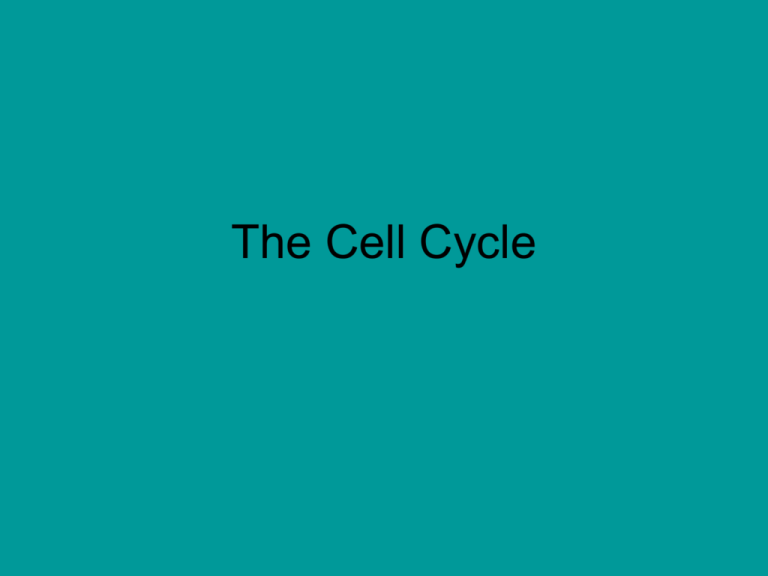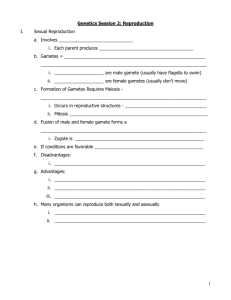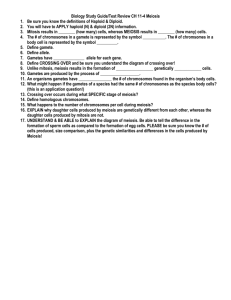The Cell Cycle
advertisement

The Cell Cycle Reproduction • • • • Organisms can reproduce: 1. Sexually AND/OR 2. Asexually Cell Division • Multicellular organisms undergo asexual cellular division (mitosis) for growth and repair. Asexual Reproduction • • • • • Cloning Binary fission Mitosis Regeneration Fragmentation • Any variations that arise are due to mutations. Sexual Reproduction • Requires gametes • Gametes form through meiosis • Fertilization of gametes creates a genetically unique individual. Chromosomes • DNA and proteins iare organized into chromosomes. • Somatic cells (non-sex cells) have two of each type of chromosome. The set is called a homologous pair. • Somatic cells are diploid or 2n cells. Gametes • Sex cells- egg and sperm • Haploid or n cells. Fertilization • Union of gametes to form a zygote. • Restores the diploid number of chromosomes. Diplonic Life Cycle • Animals and some plants • The only haploid cells are the gametes. • Gametes unite to form the diploid organism. Haplonic Life Cycle • Fungi and some protists • Only diploid cell is the zygote • Gametes are formed through mitosis, and spores are produced through meiosis which germinate to form the organism. Alternation of Generations • Most plants and some protists • Diplonic and haplonic life forms • Spores formed through meiosis and grow into the gametophyte. • Gametes formed through mitosis which unite to form the sporophyte. The Cell Cycle • Interphase (preparation for cell division) • Mitosis (Splitting of the chromosomes) • Cytokinesis (Splitting of the cytoplasm) Interphase • Chromatin • Visible nucleus • 3 Subphases – G1 – S (DNA replication) – G2 Mitosis • Prophase – Chromatin condenses – Spindle and centrosomes appear • Metaphase – Chromosomes align at the equator • Anaphase – Sister chromatids are pulled apart, • Telophase – Nuclear envelope reforms around daughter chromosomes. Cytokinesis • Splitting of the cytoplasm to form two identical cells. • Animal cells form a contractile ring and pinch. • Plant cells form a cell plate and then a cell wall originating from golgi apparatus vesicles. Regulation • Cells divide due to growth factors. • Check points regulate timing. • Cdks, or cyclin-dependent kinases, phosphorylate proteins using ATP to allow the cell cycle to proceed from one step to the next. Important Proteins • G1-S cyclin binds to Cdk which then inhibits RB (retinoblastoma protein) so that transition to the S phase can occur. • M phase cyclin binds to Cdk which allows separase to hydrolyze cohesin so that chromatids can separate. • Cytoplasmic dynein hydrolyzes ATP for chromosomes to move to poles. Meiosis • • • • • • Creation of gametes 2 nuclear divisions Reduction division Genetic variation Meiosis I separates homologues Meiosis II separates sister chromatids Genetic variation • Mutations • Crossing over resulting in recombinant chromosomes • Independent assortment Prophase I • Crossing over • Males-lasts about a week • Females- occurs prior to birth • Crossing over between non-homologues is called a translocation. Nondisjunction • Meiotic error resulting in abnormal chromosome numbers. • Aneuploidy • Polyploidy Cell Death • Necrosis • Apoptosis






